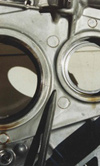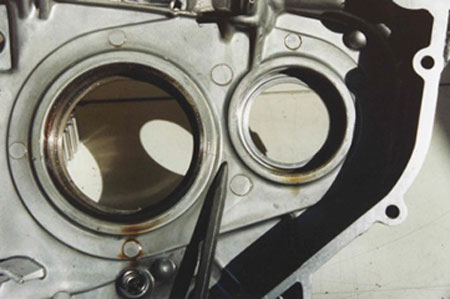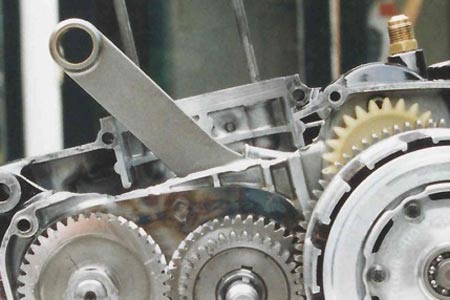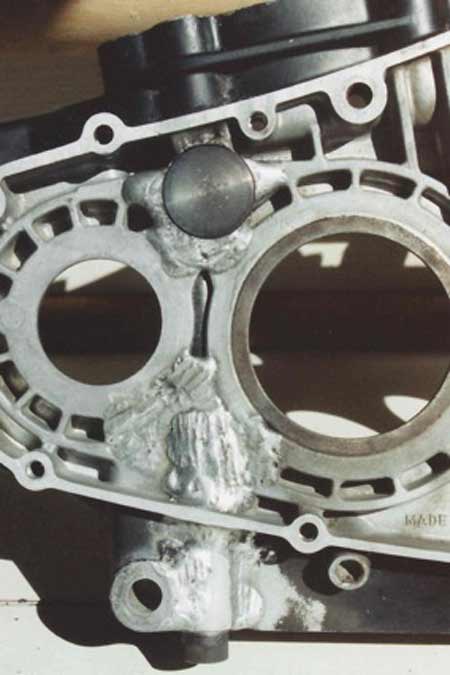Error, and trial and error?
 "One Man's Dream - The Britten Bike Story!" is the title of the DVD that goes alongside the biography of John Britten, the inventor of the Britten V1000, the legendary self-build race bike from the early 1990s that was able to threat the major manufacturers' superbikes for the podium.
"One Man's Dream - The Britten Bike Story!" is the title of the DVD that goes alongside the biography of John Britten, the inventor of the Britten V1000, the legendary self-build race bike from the early 1990s that was able to threat the major manufacturers' superbikes for the podium.
In this article I would like to show the inventiveness that small/low-level racing teams need for them to progress in their racing classes. Professional teams, with professional-level budgets, have many facilities and resources available for developing their vehicles. A major portion of these budgets is transferred into detailed knowledge, not only as regards the performance and handling but on the reliability of the used components. This is often a very difficult area for smaller constructors.
In the late 1980s and early '90s, a very interesting motorcycle racing class started to get more and more attention from true four-stroke enthusiasts around the world. This class, called Supermono, consisted of race bikes using single-cylinder, four-stroke race engines. Technical rules were almost unrestricted; the most limiting factor was that you could use only naturally aspirated internal combustion engines, so no pressurised charging was allowed. At the time, the only single-cylinder bikes on the market were enduro bikes and one or two street bikes, which were not designed to be used for serious road racing. This is also why the start of this racing class was dominated by major engine failures - broken pistons, cracked con rods and destroyed crankcases were just some of the repeated failures; not really the best way to remain friends with circuit directors.
At the beginning of Supermono, many bikes used Rotax engines, owing to their availability and reasonable cost. As power levels rose, these engines became known for their enormous power potential. The only downside was that they did not last very long with higher power outputs, and the failure that kept occurring at around 75 hp was a cracked crankcase (Fig. 1).

When something like this happens, the root cause of the failure needs to be found. Without access to sophisticated finite element models and software, basic engineering knowledge is often used to overcome these issues. Some people call this the trial-and-error method.
The crankcase material was aluminium, and because steel is stronger it was thought that this crack could be solved by clamping two metal plates on either side. Indeed, in the following race the crankcase did not crack between the bearings; unfortunately, this time the crack occurred just above the steel plates, the next weakest link (Fig. 2).

Normally, entering the second trial-and-error sequence, one thinks rather deeper about the real root cause and takes a more principles-based approach. Factors like tension, notch, compressions, load path, E-modulo and crack initiation are taken into account, all in order to find real solutions. Discussions revolve more around the function of the parts, rather than the parts themselves, and conceptual ideas are tailored to the specific design of the crankcase.
This resulted in a far more logical design modification. In order to increase overall strength in the load path direction, a steel insert was added into a machined hole in the crankcase. An extended cylinder mounting stud was assembled from the top and screwed into the insert, and an additional steel fastener was assembled from the bottom end of the crankcase, introducing compression into the structure. The most important improvement was that the total gas and inertia loads were withstood by this steel pillar (Fig. 3).

This modification meant that the 75 hp failure hurdle could be overcome, which allowed the Rotax engine to remain one of the most powerful engines in the field. A couple of years later the performance of newly developed race engines rose to more than 90 hp, and although this was of course a major achievement, it also was the beginning of the end of the Supermono class, as the level of spending needed to race at these performances with a certain reliability could not be met by the true enthusiasts.
Although small constructors and private racing enthusiasts do not have the facilities and/or budgets that professional (factory) racing teams have, there is always scope to improve. It might take a bit more time and a few more broken bits and pieces, but in the end solutions will be found. The real requirement, equal to all competitors, is engineering experience and logic thinking. Like the Britten V1000, one man's dream… .
Fig. 1 - Cracked crankcase of a Rotax 605 single-cylinder race engine
Fig. 2 - First trial-and-error solution, using two parallel plates on either side of the crankcase
Fig. 3 - Final solution with steel insert connecting the cylinder stud with a further bolt from below in the crankcase
Written by Dieter van der Put